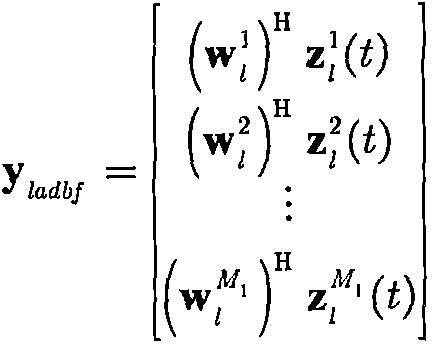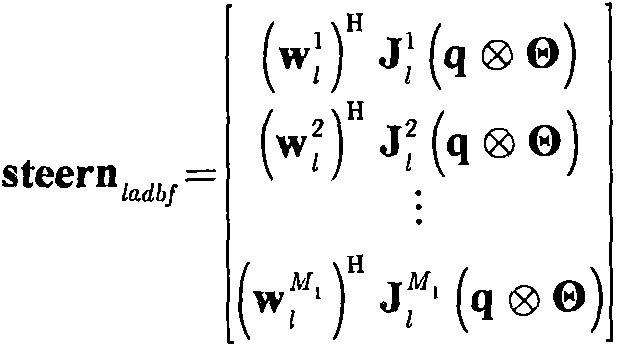Space domain-polarization domain self-adaption-based polarization area array direction of arrival estimation method under main lobe interference
A technology of direction of arrival estimation and main lobe interference, which is used in directions such as direction determination directors, radio wave measurement systems, measurement devices, etc.
- Summary
- Abstract
- Description
- Claims
- Application Information
AI Technical Summary
Problems solved by technology
Method used
Image
Examples
Embodiment Construction
[0014] The present invention will be further explained below in conjunction with the accompanying drawings and specific embodiments. Assume that the array is composed of orthogonal electric dipoles M 1 × M 2 Uniform area array, the array is arranged on the xoz plane, M 1 Indicates the number of columns in the array, M 2 Indicates the number of rows of the array, the distance between the array elements is half a wavelength, denoted as d, and the pitch angle of the incident signal relative to the array is The azimuth angle is θ, the polarization auxiliary angle is γ, the polarization phase difference is η, and the steering vector of a single orthogonal electric dipole is expressed as
[0015]
[0016] The airspace steering vector of the array is expressed as
[0017]
[0018] in
[0019]
[0020]
[0021] in, and denote the spatial guidance vectors of z-axis and x-axis respectively, (·) T Represents the transpose operation, and the symbol λ represents the ...
PUM
 Login to View More
Login to View More Abstract
Description
Claims
Application Information
 Login to View More
Login to View More - R&D
- Intellectual Property
- Life Sciences
- Materials
- Tech Scout
- Unparalleled Data Quality
- Higher Quality Content
- 60% Fewer Hallucinations
Browse by: Latest US Patents, China's latest patents, Technical Efficacy Thesaurus, Application Domain, Technology Topic, Popular Technical Reports.
© 2025 PatSnap. All rights reserved.Legal|Privacy policy|Modern Slavery Act Transparency Statement|Sitemap|About US| Contact US: help@patsnap.com



